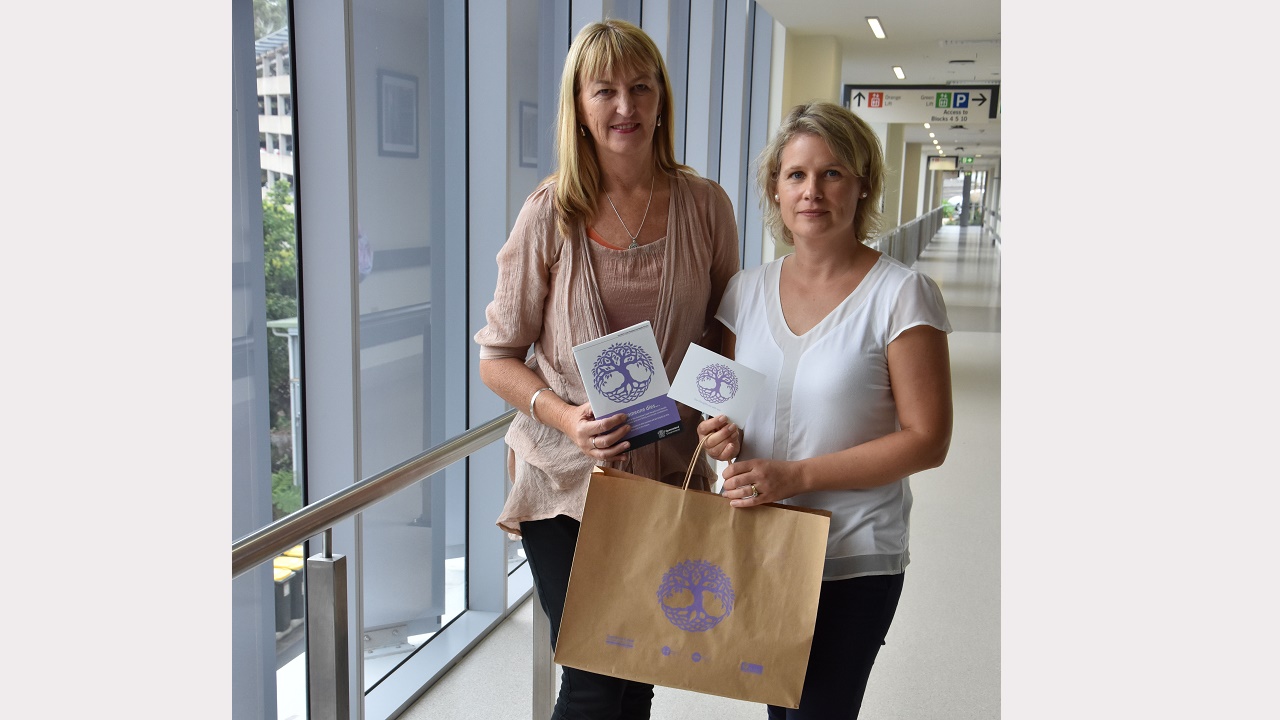Handover bag concept offered nationally as sensitive way to return possessions
Handover bag concept offered nationally as sensitive way to return possessions
by Heather Wiseman
Friday, March 24, 2017
Whether someone dies in a hospital, hospice or residential aged care facility, it’s not unusual for their possessions to be passed back to their family in a plastic garbage bag. An End of Life Care Committee in Queensland has developed a more sensitive and respectful approach, which it hopes will be adopted nationally.
The Committee, from Sunshine Coast Hospital and Health Service (SCHHS), developed handover bags, which are printed with a tree symbol designed to represent the cycle of life.
“The aim of the handover bags is to convey to the family and staff that whilst the person was a patient with us, we cared for them and respected them,” says SCHHS principal project officer for End of Life Care, Wendy Pearse.
“This care and respect begins the moment they arrive with us, until the time they leave. We will treat their belonging with the same care and dignity that we showed to the person who died.”
The same purple symbol is printed on resources which can be given to families in the bag, including a bereavement card and a booklet titled “When someone dies…”. It also features on door signs which indicate to staff and visitors that a patient has died.
 SCHHS is offering free use of the project’s graphic design elements to interested healthcare organisations. While content can be adapted to suit local needs, it is hoped the tree symbol will be retained and become widely recognised.
SCHHS is offering free use of the project’s graphic design elements to interested healthcare organisations. While content can be adapted to suit local needs, it is hoped the tree symbol will be retained and become widely recognised.
Ms Pearse says the project was inspired by equivalent resources developed by the Irish Hospice Foundation’s Hospice Friendly Hospitals Program. After learning about their handover bags, she was interested to know how possessions were returned by SCHHS staff.
“When I dug a little bit I found staff had to return belongings in something, and sometimes it was a plastic bag and I thought ‘We can do better than this’,” she says.
Ms Pearse says the two consumer representatives on the End of Life Care Committee provided valuable feedback throughout the project.
Of the many quotes and statements suggested for the bereavement card, the representatives highlighted those that were emotionally loaded or could mean different things to different people. They decided on the simple message, “Our thoughts are with you”.
Ms Pearse says staff have the opportunity to write on the card, sign it, or “even draw a love heart to say you touched my heart and you weren't just a patient to me”.
“Sometimes the patients you've cared for in the past do stay with you,” she says.
“I know in the past, if I've been involved with a patient on a ward, you sometimes feel like they leave and you never got to say 'I'm sorry and I cared'.”
The 23-page booklet, developed by the SCHHS social work department, contains information about grief, loss and bereavement. It offers advice for supporting grieving children and young people, provides practical information on finalising affairs and contact details for local support services.
The tree symbol, printed on its own without text, is proving a sensitive way to flag when someone has died to ensure that only essential staff enter the room. Pinned onto a curtain, or laminated and hung over a door handle, it makes staff aware when they need to be quiet to create a respectful environment for grieving family and friends. It also saves ancillary staff the embarrassment of entering a room and offering refreshments inappropriately.
Ms Pearse says the Sunshine Coast Health Foundation, Wishlist, funded the local project. As a guide for others who might use it, purchasing and printing 1000 bags and 500 cards cost less than $3000.
For further information or to use the symbol, contact wendy.pearse@health.qld.gov.au.
